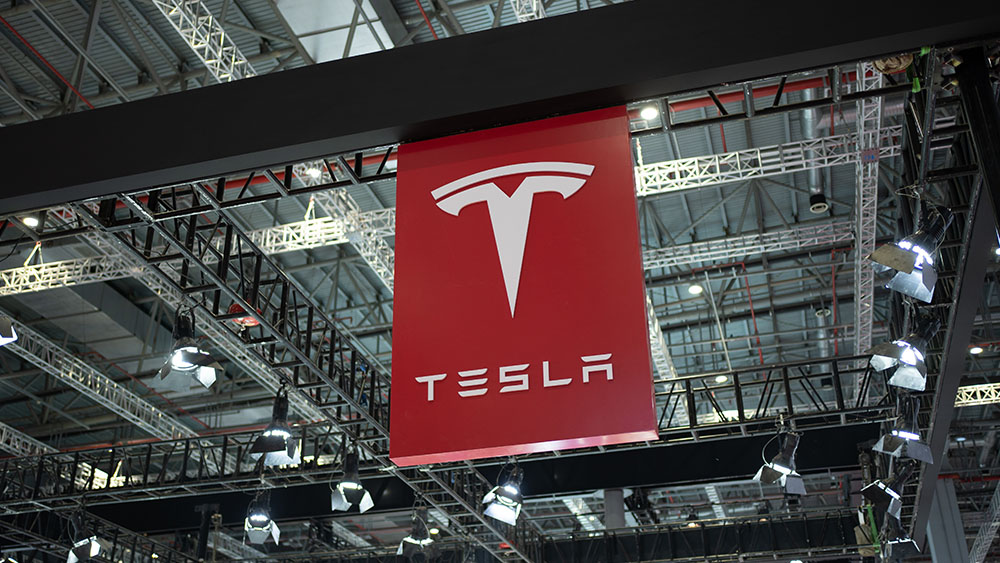 Parler
Parler Gab
Gab
- RoboForce's TITAN robot, highlighted by NVIDIA, represents a significant advance in Physical AI, capable of complex tasks in unstructured environments.
- The company claims a mission to free humans from undesirable work, citing over 11,000 letters of intent for its robots.
- This rapid industrial adoption signals a looming transformation across sectors like energy, logistics, and manufacturing.
- The push for automation raises urgent questions about the future of human employment and the true beneficiaries of this technological shift.
The dawn of deployable labor
At the recent NVIDIA GTC keynote, a showcase for the cutting edge of artificial intelligence, the spotlight fell on RoboForce and its flagship robot, TITAN. Described as a "scalable and deployable AI robot," TITAN is not a simple pre-programmed machine. It is powered by a sophisticated 3D foundation model that grants it advanced spatial understanding and manipulation with millimeter-level precision. This means it can navigate and work in complex, unpredictable settings—a warehouse one day, a data center the next—without needing every single movement meticulously coded by a human engineer. With an eight-hour runtime and the ability to carry an 80-pound payload, it is not a prototype; it is, by the company's own admission, production-ready. This transition from research and development to commercial pilot production, backed by over 11,000 letters of intent, reveals an industry hungry for automation. The initial deployments in the energy sector are just the beginning, with expansions planned for shipping, logistics, mining, and manufacturing. What does this voracious appetite for robotic labor say about the value placed on human workers in these fields?A benevolent mission or a corporate calculus?
Leo Ma, founder and CEO of RoboForce, frames the company's mission in altruistic terms: to "elevate humans beyond dull, dirty, and dangerous work" and to "address ongoing labor issues for the betterment of mankind." This is a compelling narrative, one that suggests a future of leisure and creative pursuit for a workforce liberated from toil. Yet, one must scrutinize the language of corporate announcements. The promise of "bettering mankind" often walks hand-in-hand with the reality of bolstering the bottom line. The very term "Robo-Labor" betrays the primary function: replacement. When a company can deploy a tireless, non-unionized, and infinitely scalable workforce that does not require healthcare, sick days, or pensions, the economic incentive to replace human beings becomes overwhelming. This is not necessarily a conspiracy, but rather the predictable outcome of a system where commercial interests consistently outweigh human ones. How many workers in "dull" jobs have been consulted about their desired elevation? The path to this automated future is being paved not by public consensus, but by corporate boardrooms and their partners in technology.The human cost of mechanical precision
The coming wave of automation promises efficiency, but it carries a profound human cost that is too often dismissed as mere collateral damage. The sectors targeted by RoboForce—energy, manufacturing, logistics—are pillars of the modern blue-collar workforce. These are not just jobs; they are livelihoods that support families and sustain entire communities. As TITAN and its successors begin their "robot internships," the humans they work alongside may soon find themselves in a quiet competition they cannot win. The narrative that machines will simply take over the "dirty" jobs ignores the reality that for many, these jobs are a source of dignity and purpose. What becomes of the skilled technician, the warehouse foreman, or the assembly line worker when a corporation can purchase a more reliable, cost-effective alternative? The landscape of employment is set to be fundamentally disheveled, creating a rift between a class of highly skilled AI managers and a vast population of displaced workers. This is the true disruption, a social and economic rearrangement that will test the very fabric of society. Will the corporations profiting from this shift contribute to retraining and supporting the people they render obsolete, or will they simply leave them behind in the relentless march of progress? The speed of this technological adoption, enabling a single robot to perform the work of multiple humans, suggests that the corporate world has already made its choice. Sources include: RoboticsofTomorrow.com RoboForce.ai Enoch, Brighteon.aiTesla recalls 10,500 Powerwall 2 battery systems over fire and burn hazards
By Cassie B. // Share
Foreclosure surge signals housing market distress as costs spiral out of control
By Cassie B. // Share
UAE and U.S. forge AI-powered drone alliance amid growing military tech race with Iran and China
By Kevin Hughes // Share
Governments continue to obscure COVID-19 vaccine data amid rising concerns over excess deaths
By patricklewis // Share
Tech giant Microsoft backs EXTINCTION with its support of carbon capture programs
By ramontomeydw // Share
Germany to resume arms exports to Israel despite repeated ceasefire violations
By isabelle // Share










